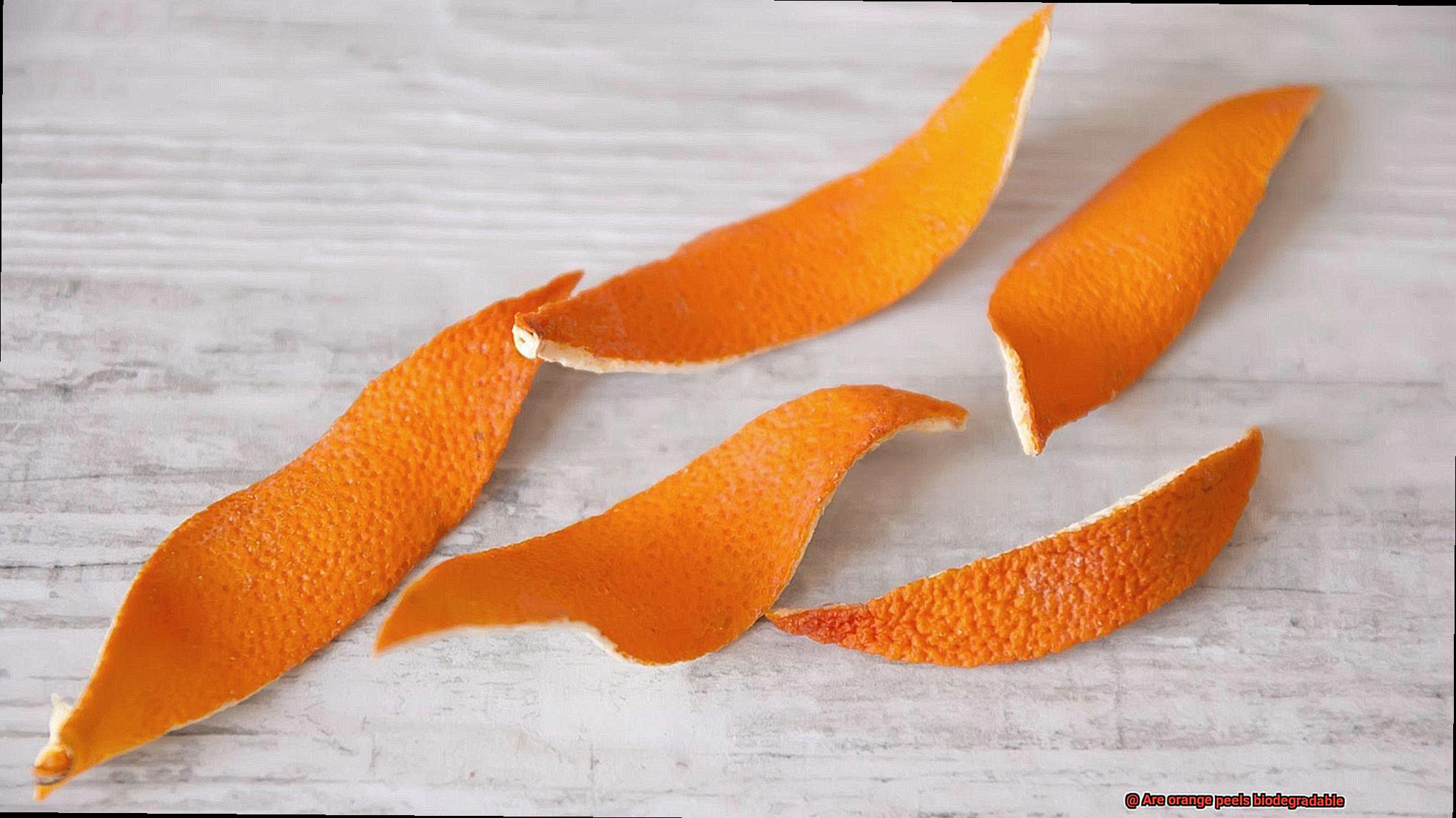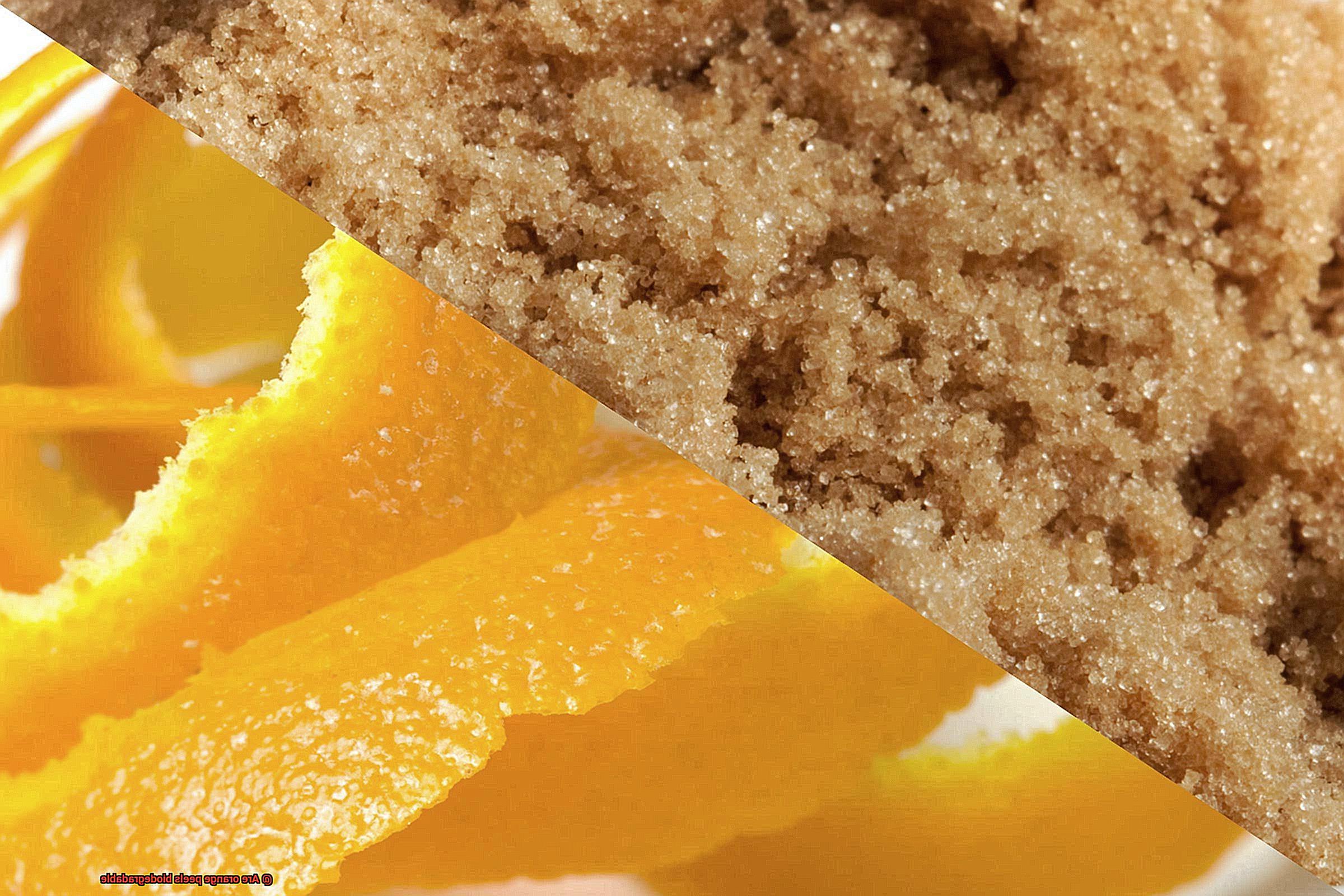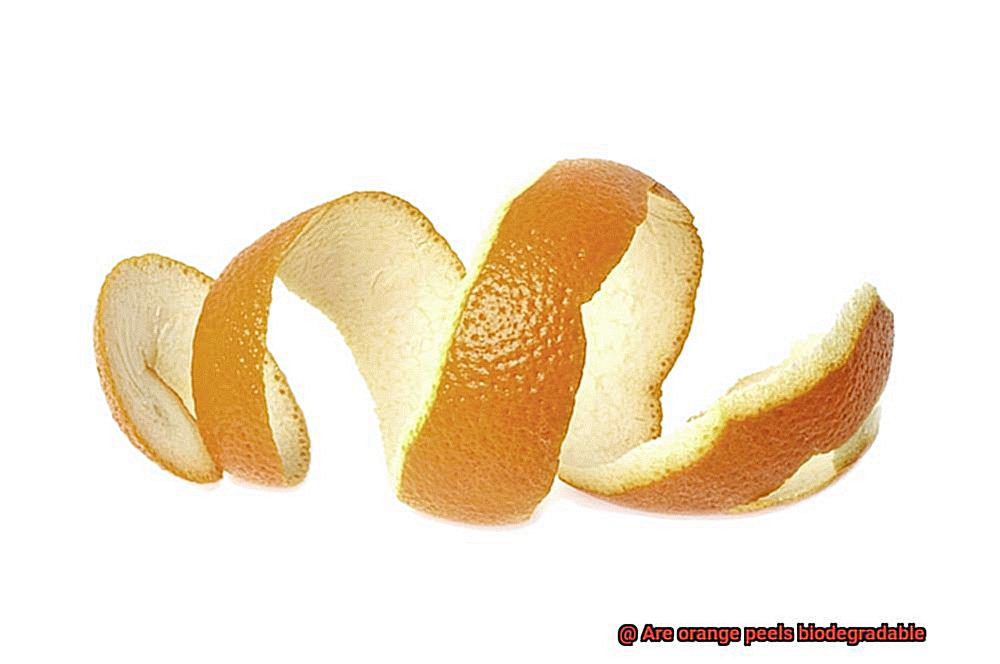Have you ever stopped to consider the fate of an orange peel once it’s been tossed into the compost bin? Are you unsure whether orange peels are biodegradable or not? It’s a question that often goes unanswered, but one that’s worth exploring. Orange peels are one of the most common kitchen scraps, and yet they’re often discarded without a second thought. However, if disposed of properly, these zesty scraps can be incredibly beneficial for the environment.
As an expert in environmental sustainability, I’m here to confirm that orange peels are indeed biodegradable. This means that they’ll break down and decompose over time without causing any harm to the environment. Biodegradation is a natural process by which organic matter is broken down by living organisms such as bacteria and fungi into simpler substances that eventually return to nature. When orange peels are disposed of correctly, this breakdown process can take anywhere between six months to two years.
In this blog post, we’ll delve deeper into the topic of orange peel biodegradability. We’ll explore why it’s crucial to dispose of them correctly and how they can be a valuable addition to your compost pile. Additionally, we’ll bust some common misconceptions about orange peels and discuss several ways they can be repurposed creatively. So let’s get started on this journey towards understanding more about orange peel biodegradability.
What is Biodegradable?
Contents
It’s important to understand that not all materials are created equal, and some can have a harmful impact on the environment. This is where biodegradability comes in.
When we say something is biodegradable, we mean that it can break down naturally through the action of microorganisms like bacteria and fungi. These little creatures consume the material, breaking it down into simpler compounds that can be absorbed by the environment without causing any harm.
But not all biodegradable materials are created equal. Some may take longer to decompose than others, or they may release harmful toxins during the process. That’s why it’s important to consider factors like temperature, moisture levels, and the presence of oxygen when determining whether a material is truly biodegradable.
Luckily, there are many biodegradable materials out there that are considered environmentally friendly because they don’t accumulate in landfills or oceans, reducing pollution and waste. Orange peels are a great example of this. When disposed of properly by composting or placing them in municipal organic waste collection bins, they can naturally decompose and provide valuable nutrients to plants and animals.
When we use biodegradable materials, we’re contributing to a more sustainable world for future generations. By lowering our impact on the environment and reducing waste, we’re making a positive impact on our planet.

Are Orange Peels Biodegradable?
Orange peels are biodegradable, meaning that microorganisms and bacteria can break them down naturally into harmless byproducts. The process of biodegradation is facilitated by the presence of oxygen, moisture, and heat.
Did you know that d-limonene, a natural solvent found in orange peels, is commonly used in cleaning products and industrial processes like paint stripping and degreasing? Fortunately, this superhero compound is also biodegradable and can decompose into harmless byproducts when exposed to microorganisms.
But what happens when we don’t dispose of orange peels properly? When orange peels are left in landfills, they take longer to decompose due to a lack of oxygen and moisture. This results in the production of methane gas – a potent greenhouse gas that contributes to climate change.
So, what’s the solution? Composting. Composting orange peels is an effective way to turn them into nutrient-rich soil amendments. Mixed with other organic materials like leaves, grass clippings, and food scraps, these superhero peels can help create a healthy environment for plants to grow.

Composting not only reduces the amount of waste sent to landfills but also helps to reduce greenhouse gas emissions. By composting our orange peels, we can make a positive impact on our planet while creating nutrient-rich soil for our gardens.
In conclusion, orange peels are biodegradable superheroes that should be composted rather than sent to landfills. By doing so, we can reduce waste and greenhouse gas emissions while creating valuable soil amendments.
Factors that Affect the Rate of Biodegradation
Biodegradation is a process in which microorganisms break down organic materials into simpler substances. Let’s dive deeper into the various factors that can affect this process.
Temperature is a critical factor in biodegradation. Microbial activity thrives at temperatures between 20-40 degrees Celsius. Lower temperatures slow down degradation, while higher temperatures can even kill microorganisms. Therefore, it’s essential to store orange peels at optimal temperatures to facilitate microbial activity and promote biodegradation effectively.

Moisture is equally important in biodegradation. Microorganisms require water to break down organic materials. If the moisture level is inadequate, the biodegradation process may slow down or stop altogether. On the other hand, excessive moisture can create anaerobic conditions that negatively impact microbial activity. It’s essential to maintain a balance between moisture levels to ensure optimal biodegradation.
Oxygen is a crucial factor that affects biodegradation rates. Aerobic microorganisms need oxygen to carry out their metabolic processes effectively. Hence, it’s vital to ensure adequate oxygen levels in the environment where orange peels are disposed of to promote optimal biodegradation.
Moreover, pH levels play a critical role in biodegradation. Microorganisms have different pH requirements for optimal growth and activity, with most preferring neutral pH levels between 6-8.Acidic or alkaline environments can inhibit microbial activity and slow down the rate of biodegradation.
Finally, the presence of other chemicals can significantly impact biodegradation rates. Some chemicals are toxic to microorganisms and can hinder their growth and activity, making it crucial to avoid disposing of orange peels in areas with high levels of toxic chemicals to promote optimal biodegradation.
By understanding these factors that affect the rate of biodegradation, individuals can make informed decisions when disposing of orange peels. Proper disposal methods that promote optimal biodegradation can help reduce environmental pollution and promote sustainability.
Disposal Methods for Orange Peels

Today’s topic is all about how to dispose of orange peels in the most environmentally friendly way possible. As an expert, I have researched and gathered different methods that you can use.

The first method is composting, which is like giving your soil a nutritious smoothie. Orange peels are organic matter and can be added to your compost pile, along with other food scraps and yard waste. As they break down, they release valuable nutrients into the soil, which can benefit plants and gardens.
Another method is to use orange peels as a natural cleaner, which is like using nature’s cleaning crew. The high acid content in orange peels makes them effective at cleaning surfaces such as kitchen counters, sinks, and cutting boards. By rubbing the surface with an orange peel and wiping it clean with a damp cloth, you not only clean but also reduce waste and save money on cleaning products.
If you’re looking for a way to keep pests away, orange peels can also be used for pest control. This method is like creating a natural barrier to protect your precious plants. The oil in orange peels contains a chemical called limonene, which is toxic to many insects. Placing orange peels around the perimeter of your garden or near plants can help keep pests away without using harmful chemicals.
Lastly, if none of these options appeal to you, you can dispose of orange peels in the garbage. However, it’s important to note that orange peels take a long time to decompose in a landfill, which can contribute to environmental problems such as greenhouse gas emissions.
In conclusion, by composting or using orange peels for cleaning or pest control, you can reduce waste and benefit both your home and the environment. So next time you have an orange peel, don’t just toss it.
Composting as an Ideal Environment for Biodegradation
Composting is a magical process that turns organic waste material into a nutrient-rich soil amendment. It’s like a bustling metropolis filled with microorganisms that work tirelessly to break down the waste into simpler compounds that can be absorbed by plants. This process involves mixing various organic materials such as food scraps, yard waste, and paper products in a pile or bin and allowing them to decompose over time.
But why is composting such an ideal environment for biodegradation? The answer lies in the conditions it provides. Composting offers the perfect balance of moisture, oxygen, and temperature that microorganisms need to thrive. These tiny creatures feast on the organic matter in the compost pile and release enzymes that break it down into simpler compounds that are essential for plant growth.
Now, let’s talk about orange peels. Can they be composted successfully? Absolutely. Orange peels are full of nutrients such as nitrogen and phosphorus that are essential for plant growth. However, they do take longer to decompose than other organic materials because of a compound called d-limonene, which gives oranges their distinctive scent.
But don’t let this discourage you from composting your orange peels. To speed up the decomposition process, simply chop them into smaller pieces before adding them to the compost pile. This will increase their surface area and allow for faster biodegradation. And even though it may take longer than other organic materials, the end result will still be a valuable nutrient-rich soil amendment that your plants will love.
In conclusion, composting is an ideal environment for biodegradation and a fantastic way to reduce waste while creating a valuable resource for your garden or plants.
Benefits of Proper Disposal of Orange Peels
Properly disposing of orange peels can lead to a plethora of benefits, both for the environment and our daily lives. Not only are orange peels biodegradable, but they also contain essential nutrients that can improve soil quality.
One of the primary benefits of proper disposal of orange peels is reducing waste. Globally, food waste is a significant problem, and orange peels make up a large portion of it. However, when disposed of correctly, orange peels can break down into organic matter, which can be used for composting.
Composting is like a bustling metropolis full of microorganisms working tirelessly to transform organic waste into nutrient-rich soil. Orange peels are rich in essential nutrients like nitrogen, phosphorus, and potassium, which are vital for plant growth. By composting orange peels, we can create a valuable resource for our plants while reducing the need for synthetic fertilizers.
But wait, there’s more. Orange peels can also act as natural pest repellents. The essential oils found in orange peels are effective at deterring insects such as ants and mosquitoes. By merely placing orange peels near problem areas, we can deter pests without the need for harmful chemicals.
Proper disposal of orange peels also has environmental benefits. When they end up in landfills, they release methane gas that contributes to climate change. By composting or properly disposing of orange peels, we can reduce greenhouse gas emissions and promote sustainable practices.
lwWAvIzPFl8″ >
Conclusion
To sum up, orange peels are eco-friendly champions that can aid the environment if disposed of correctly. Biodegradation is a natural process where tiny organisms break down organic matter into simpler substances that eventually return to nature. Orange peels are packed with vital nutrients such as nitrogen and phosphorus, making them excellent additions to compost heaps. However, it’s crucial to consider factors like temperature, moisture levels, and oxygen presence when determining if a material is genuinely biodegradable.
The proper disposal methods for orange peels include composting, using them as natural cleaners or pest repellents, or disposing of them in municipal organic waste collection bins. Composting provides the ideal balance of moisture, oxygen, and temperature that microorganisms require to flourish. By composting our orange peels, we can reduce waste and greenhouse gas emissions while creating valuable soil amendments.
The advantages of appropriate orange peel disposal go beyond reducing waste and greenhouse gas emissions. They also serve as natural pest deterrents and contain essential nutrients that enhance soil quality. By disposing of orange peels correctly, we can contribute to a more sustainable future for generations to come.
In conclusion, orange peels are biodegradable superheroes that should be composted instead of being sent to landfills. By doing so, we can decrease waste and greenhouse gas emissions while creating valuable soil amendments for plants and animals alike. Proper disposal methods for orange peels also offer additional benefits such as natural pest control and improved soil quality.





